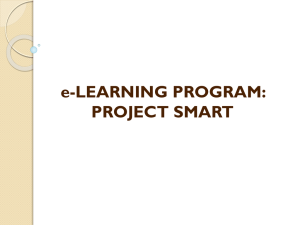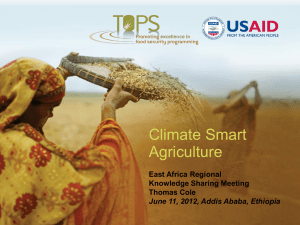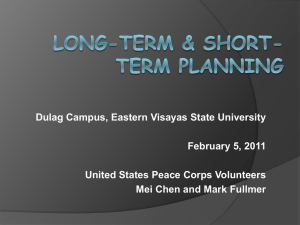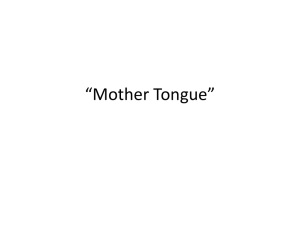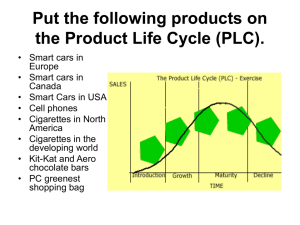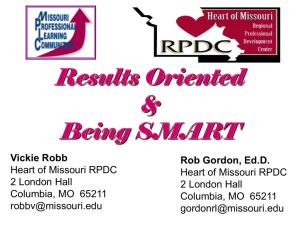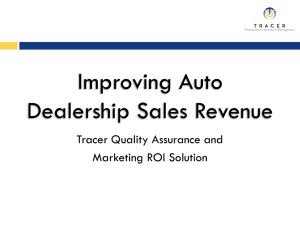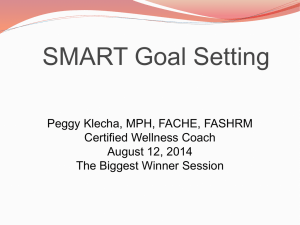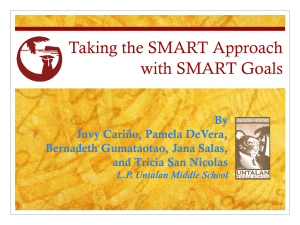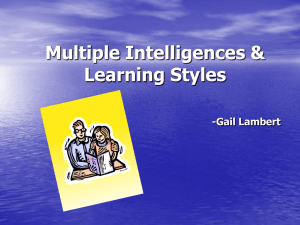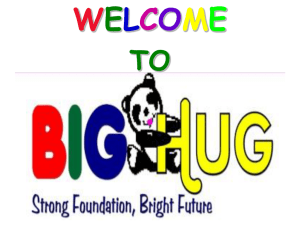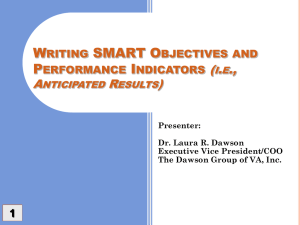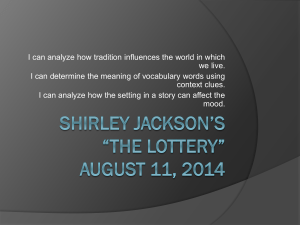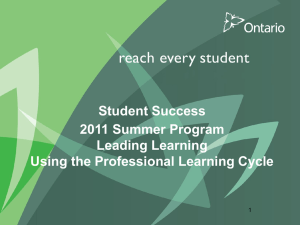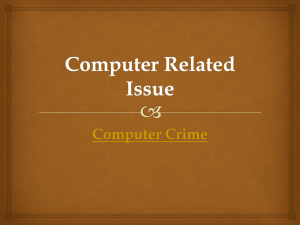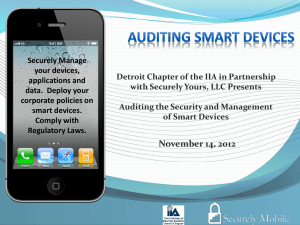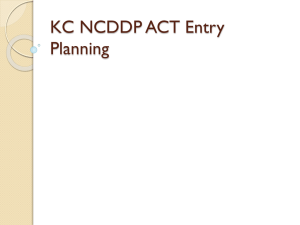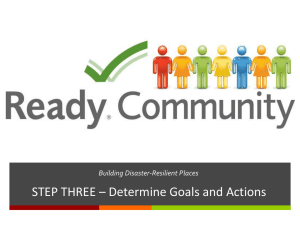Outcome & Need presentation (Matthew Rowe, Big Lottery Fund)
advertisement
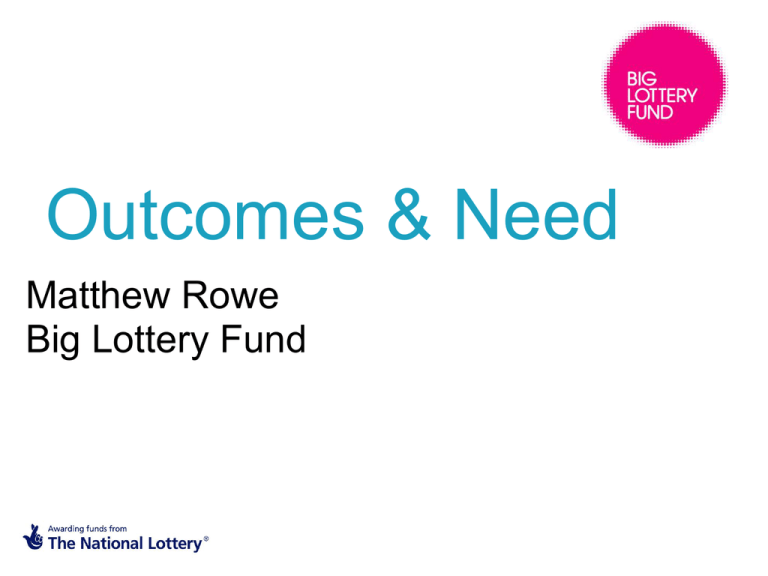
Outcomes & Need Matthew Rowe Big Lottery Fund SMART Outcomes Project Aim • The project aim is the overall purpose of the project • A project aim should be something that can be achieved • For example: To improve young people’s involvement in the community Project Outcomes • What needs to change for the project to achieve its aim? • What difference will the project make for the beneficiaries? • Big Lottery Fund will ask projects to identify 3-5 outcomes SMART Outcomes Use words that indicate change like more, better, increased, reduced, improved Outcomes must be SMART: specific, measurable, achievable, realistic and time-based For example: 300 young people have increased their fitness levels and enjoyed improved physical health by 31 December 2012 Writing Outcomes Your outcomes should answer the following questions – Who will benefit? – How will you know your project is making a difference? – What is the change you intend to make? For example: 25 local families with autistic children report reduced stress as a result of respite opportunities by the end of the second year Outcomes Quiz 1. 2. 3. 4. 5. 6. 7. 8. Set up and advertise 10 training courses. 10 young people have reduced or stopped using drugs by the end of the project Run a befriending service for 150 disaffected young people Build a village hall 25 older people report reduced isolation through volunteering by the end of the project 15 low income families eat more fruit and vegetables Recruit volunteers The involvement of 100 residents in regular recycling and environmental activities will result in refurbished green spaces by the end of the project. Project activities • What will you do to bring about your planned outcomes? • What tasks and services will you carry out? • Use doing words to describe your activities. For example: provide, run, promote • Example: Run a weekly evening circuit training class for 20 young people during term time. Aim The overall aim of your project Outcomes The difference you intend to make for your beneficiaries Activities What those working on your project will actually do, week by week. Aim Young people positively engaged in the community Outcome Young people demonstrate improved social skills, self confidence and motivation Activities Community action days Recruit and train young people as volunteers Peer support for young people Aim Young people positively engaged in the community SMART Outcome By the end of the project, 300 young people demonstrate improved social skills, self-confidence and motivation as a result of their involvement in the organisation of 3 community action days. Activities Community action days Recruit and train young people as volunteers Peer support for young people Milestones • Milestone are steps along the way to achieving your outcomes • What do you hope to achieve, for how many people and by when? • Be realistic when estimating numbers • SMART milestone example: 12 community re-cycling events held by the end of the third year. Exercise • Consider the scenario given to your group • 2. Use the outcomes triangle and in your group decide • a project aim • 3-5 project SMART outcomes • activities Writing about need What evidence can you use to prove there is a need for your project? What do we mean by need? Big Lottery Fund’s mission statement: ‘To bring real improvements to communities and to the lives of people most in need’ • What difficulties do people in the community face? • Why do they face these difficulties? • What needs to change to address this issue? Why do you need to evidence need? • High demand for limited resources • Prove your project will make a difference • Prove that you haven’t presumed what the community needs • Prove that your project is the best way of addressing the need identified – what are the alternatives? • Prove that you understand the community and their needs What sources can you use to evidence need? • Strategies - generic and specialist • Statistics and area or community profile • Research (reports, surveys etc) • Consultation and community involvement What sources can you use to evidence need? • Other existing services/current provision (or lack of) • Evaluation of existing services • Letters of support • Anecdotal evidence Key principles What should you consider when referencing or carrying out research? • Avoid using individual pieces of evidence in isolation • Ask questions about the data you’re referencing to determine if it is a reliable source • Try to ensure research is not biased: • Take care when wording questions and interpreting data • Ensure surveys and statistics are representative How much evidence do you need to provide? First identify: • the scale of the problem • what capacity you have As a minimum, you need to involve your stakeholders: • stakeholder analysis - who are your key stakeholders? • How do you involve them (incl. the ‘hard to reach’)? Presenting your case Group exercise • Strengths and weaknesses? • Excellent, Good, Satisfactory or Weak? Some useful websites - facts, figures and strategies – Census statistics: www.neighbourhood.statistics.gov.uk – Community Health Profiles: www.communityhealthprofiles.info – Association of Public Health Observatories: www.apho.org.uk – – – – Regional Observatories: www.regionalobservatories.org.uk Government Offices: www.gos.gov.uk/national 10 Downing Street: www.number-10.gov.uk Government Directory: www.direct.gov.uk Big Lottery Fund is not responsible for the contents of external websites


